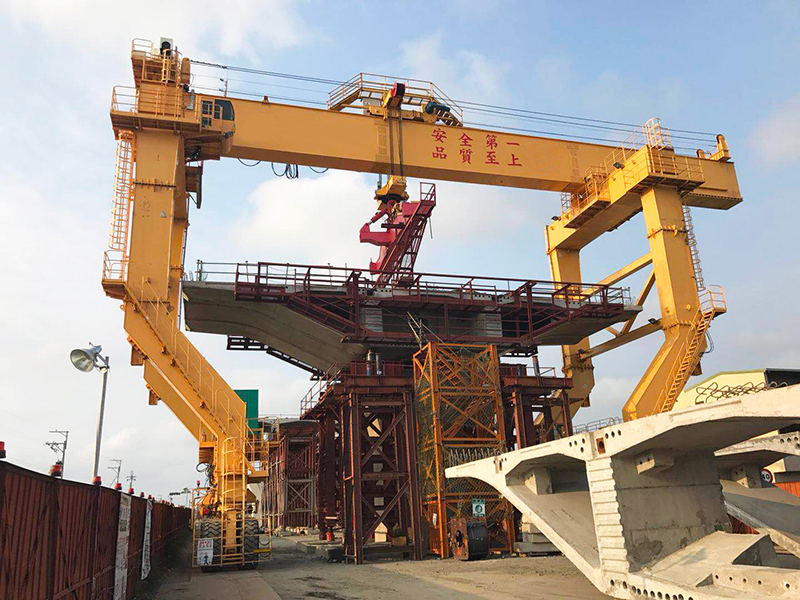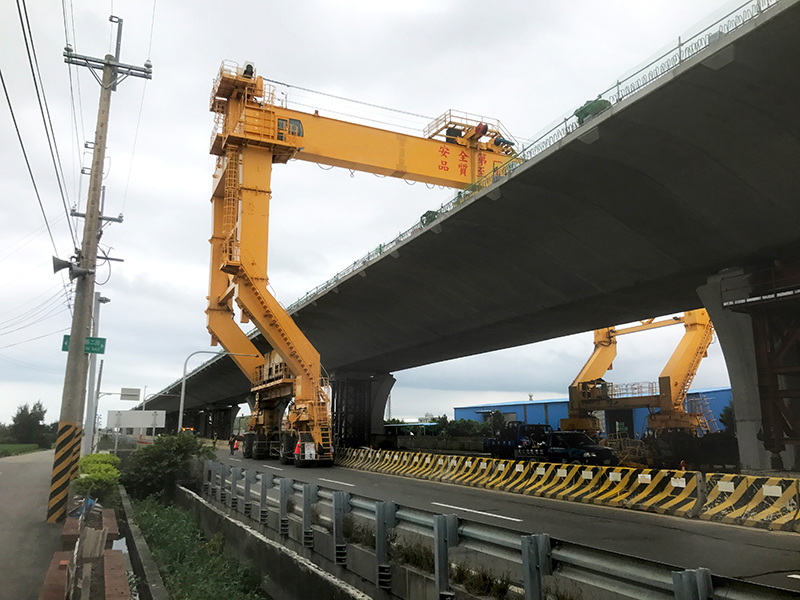In the realm of bridge construction, the lifting of heavy components is a critical phase that demands meticulous planning and execution. The towering presence of cranes on construction sites signifies not only power but also the responsibility of handling massive loads with utmost precision. One of the paramount concerns during these operations is ensuring crane stability. In this article, we delve into the methods and technologies employed to guarantee the stability of cranes when lifting heavy bridge components.

Understanding the Challenge
Lifting heavy bridge components, such as steel beams, concrete segments, or even entire bridge sections, requires cranes to operate at or near their maximum capacity. This poses inherent challenges, as the center of gravity shifts dynamically throughout the lifting process. Maintaining crane stability becomes crucial to prevent accidents, ensure the safety of personnel, and protect the integrity of the bridge components.
Ground Preparation and Foundation Stability
The stability of a crane for bridge construction starts with the ground it stands on. Before any lifting operation, the construction team ensures that the ground is adequately prepared to support the crane’s weight and the load it will be lifting. The ground should have sufficient bearing capacity, and any soft or unstable areas need to be addressed. Additionally, the crane’s foundation, such as outriggers or mats, is deployed to distribute the load evenly and prevent sinking or tilting.
Load Calculation and Distribution
Prior to lifting, meticulous calculations are made to determine the weight and center of gravity of the bridge component. Engineers consider the load distribution across the crane’s boom, jib, and rigging system. By understanding these factors, operators can adjust the crane configuration and rigging to ensure an optimal balance during the lift.
Dynamic Load Monitoring Systems
Modern cranes are equipped with sophisticated technologies, including dynamic load monitoring systems. These systems continuously assess the weight and movement of the load in real-time. If the load shifts unexpectedly, the crane’s computerized control system can adjust parameters to maintain stability. This real-time monitoring is a crucial component of preventing accidents during lifts.

Counterweight Systems
Counterweights play a pivotal role in counteracting the imbalances caused by heavy loads. Cranes are equipped with adjustable counterweight systems that can be configured based on the specific requirements of each lift. Properly calibrated counterweights help stabilize the crane and prevent tipping.
Load Chart Analysis
Every crane is accompanied by a load chart that provides critical information about its lifting capacities under different configurations. Before any lift, operators meticulously analyze the load chart to ensure that the straddle lift crane is within its rated capacity for the given configuration. Deviating from these guidelines can compromise stability and pose significant risks.
Wind and Weather Considerations
Weather conditions, particularly wind, can significantly impact crane stability. Wind forces can induce swaying or tipping if not properly managed. Crane operators and engineers carefully monitor weather forecasts and implement wind speed restrictions during lifts. In extreme cases, operations may be temporarily halted until conditions are deemed safe.
Communication and Coordination
Effective communication is paramount during lifting operations. Crane operators must maintain constant communication with signal persons and other team members. Clear and concise signals ensure that the crane movements align with the lifting plan, preventing sudden or unexpected shifts that could compromise stability.
Operator Training and Certification
The human factor is integral to crane stability. Well-trained and certified operators understand the nuances of crane operations, including load dynamics, center of gravity considerations, and emergency procedures. Ongoing training programs ensure that operators stay abreast of the latest technologies and safety protocols.
Conclusion
Ensuring crane stability during the lifting of heavy bridge components is a multifaceted endeavor that involves a combination of advanced technologies, meticulous planning, and skilled execution. From the ground preparation to real-time monitoring systems, each step is geared towards mitigating risks and guaranteeing the safe and efficient completion of lifting operations. As bridge construction continues to push the boundaries of engineering, the emphasis on crane stability remains at the forefront, ensuring that these towering machines stand tall as symbols of both strength and precision on construction sites around the world. To learn more, visit https://steelmillcranes.com/